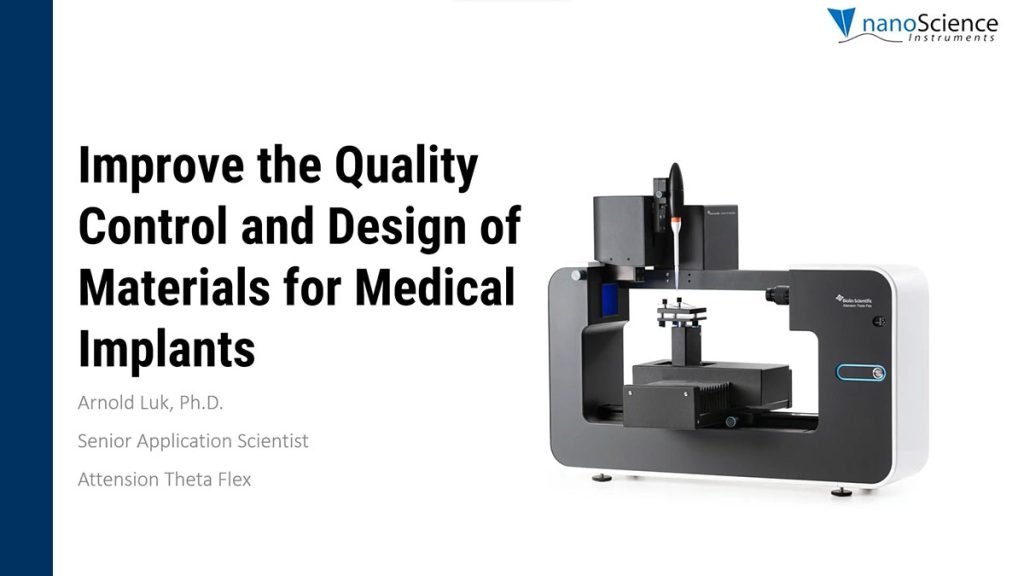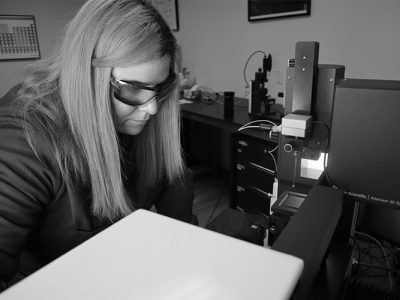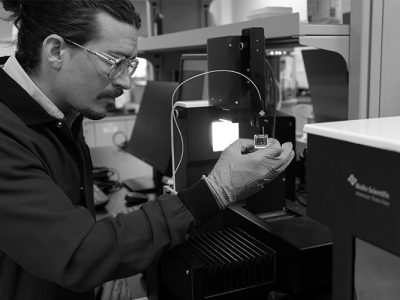Improve the quality control and design of materials for medical implants
Join Nanoscience Instruments for an overview of the Attension Theta Flex with the topography module. This webinar will focus on how surface roughness and wettability affect the biocompatibility of implant materials.
The Theta Flex with topography allows for topography and contact angle measurements to be performed on the same area. The surface roughness correction, available only on the Attension Theta Flex, characterizes both the apparent and correct contact angle. This feature provides insight into both the inherent material properties of the sample as well as how surface roughness affects the wettability of its surface. This capability is essential for both the quality control of existing products as well as research on the next generation of materials.
Presentation Abstract:
As patient populations age, there is a growing need for dental and orthopedic implants to provide patients with mobility and quality of life. Currently, materials such as stainless steel, titanium, and titanium alloys are employed for dental and bone implants because of their strength and overall biocompatibility. Biopolymers and bioactive coatings are also being studied to allow the body to better tolerate the foreign material.
Implant surface properties such as roughness and wettability influence the host tissue interactions. The wettability of these surfaces is a great influencer of protein adsorption, where moderately hydrophilic surfaces tend to display enhanced protein adsorption and improved cell growth. However, overly hydrophilic surfaces can decrease cell adhesion, which suggests an optimal level for surface energy. Cell spreading and differentiation are also known to be influenced especially by both microscale roughness and wettability.
Prior to implantation, implant surfaces are often roughened to allow for osteocytes to infiltrate and attach to the material – a process known as osseointegration. Successful osseointegration imparts better mechanical stability and patient comfort. To ensure that product quality and patient safety are preserved, this roughening process must be tightly controlled and quantified. Processing steps that roughen surfaces, such as acid etching and grit blasting, are also known to leave behind unwanted chemicals or particles. These contaminants can also be detected with the same tools that can probe surface wettability and surface energy.





